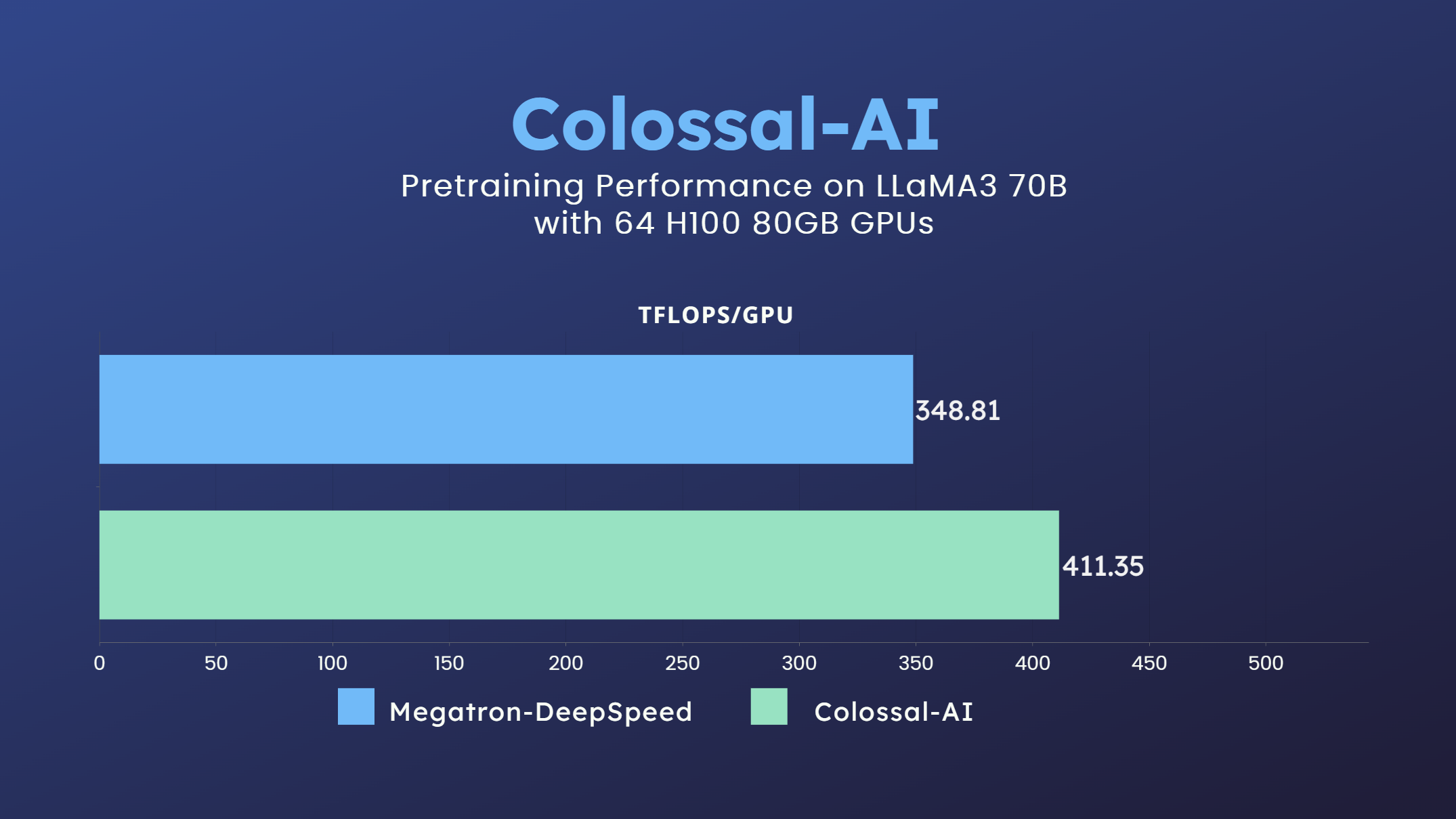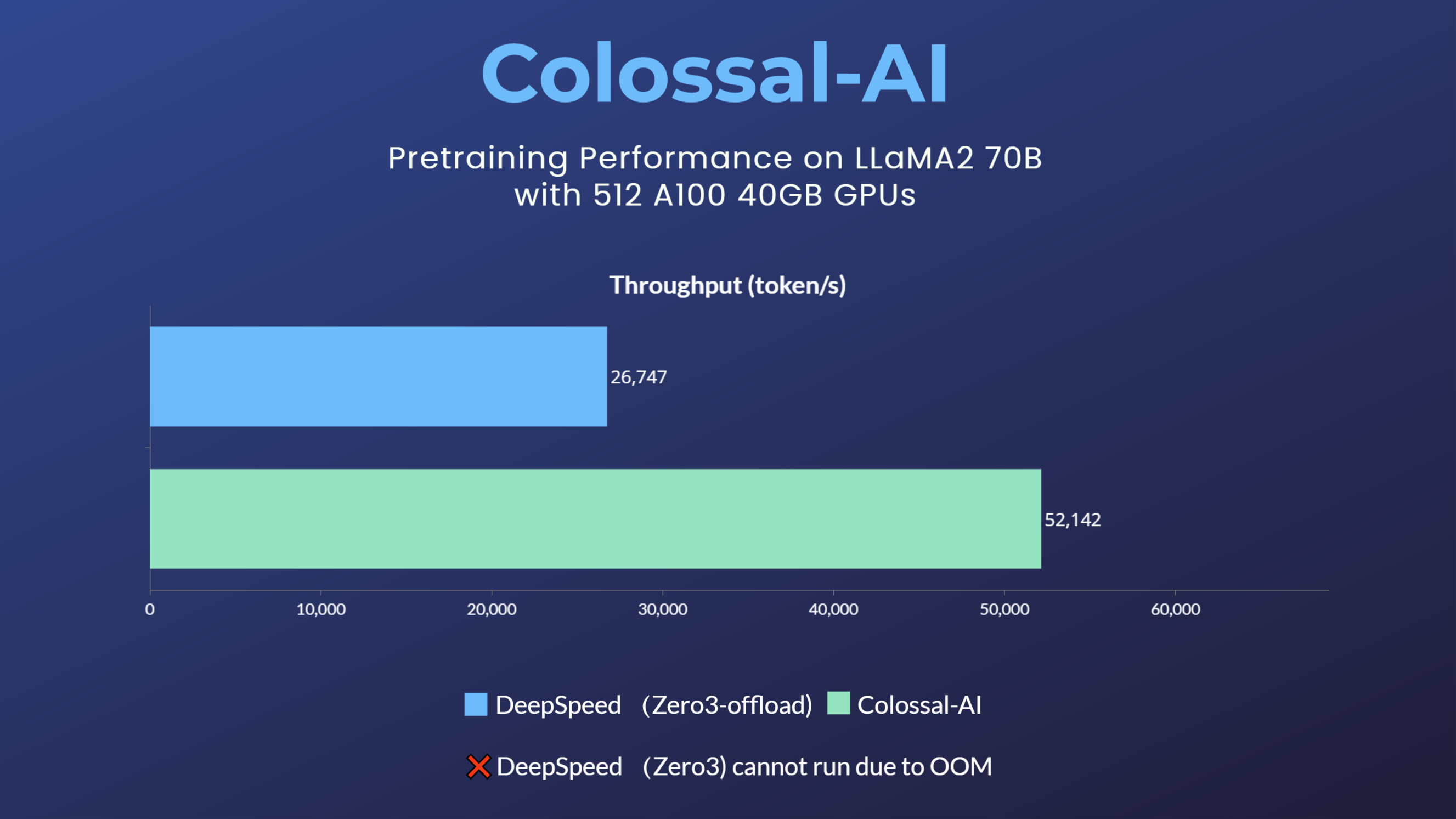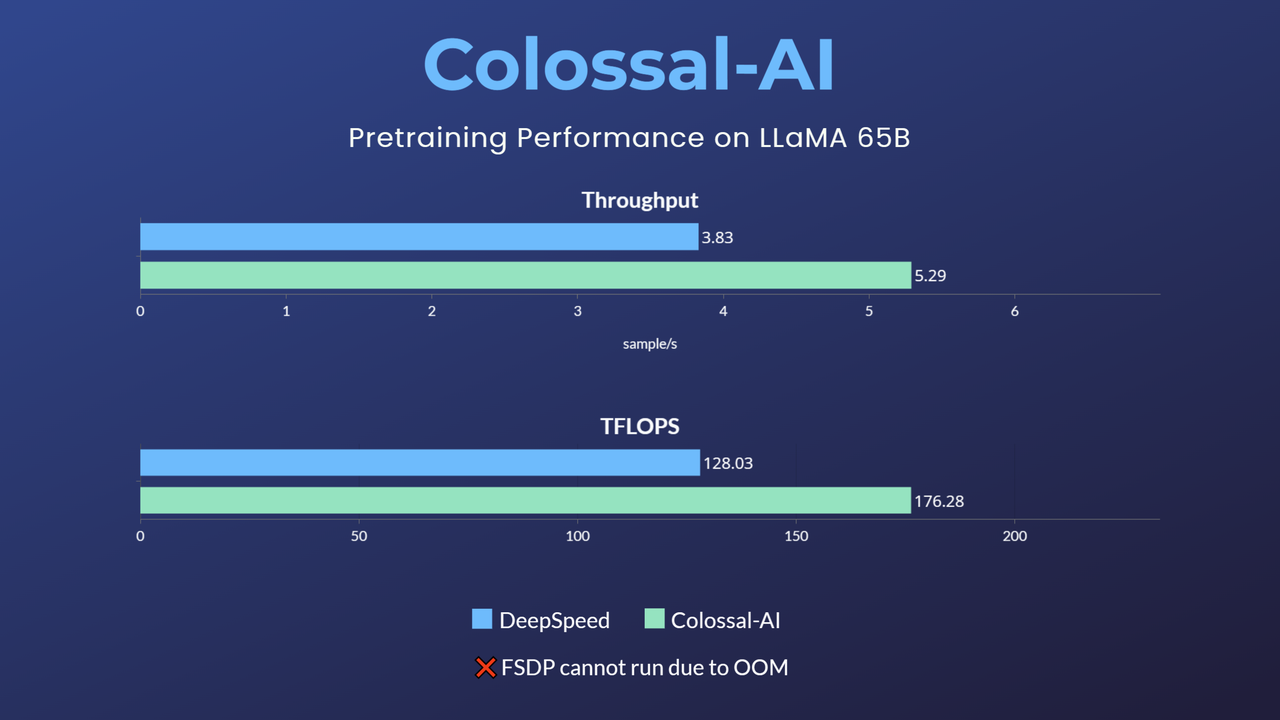ColossalAI/examples/language/llama at main · hpcaitech/ColossalAI (original) (raw)
Pretraining LLaMA-1/2/3: best practices for building LLaMA-1/2/3-like base models
LLaMA3
- 70 billion parameter LLaMA3 model training accelerated by 18%
LLaMA2
- 70 billion parameter LLaMA2 model training accelerated by 195%[blog]
LLaMA1
- 65-billion-parameter large model pretraining accelerated by 38%[blog]
Usage
⚠ This example only has benchmarking script. For training/finetuning, please refer to the applications/Colossal-LLaMA.
1. Installation
Please install the latest ColossalAI from source.
BUILD_EXT=1 pip install -U git+https://github.com/hpcaitech/ColossalAI
Then install other dependencies.
pip install -r requirements.txt
4. Shell Script Examples
For your convenience, we provide some shell scripts to run benchmark with various configurations.
You can find them in scripts/benchmark_7B and scripts/benchmark_70B directory. The main command should be in the format of:
colossalai run --nproc_per_node YOUR_GPU_PER_NODE --hostfile YOUR_HOST_FILE
benchmark.py --OTHER_CONFIGURATIONS
Here we will show an example of how to run training llama pretraining with gemini, batch_size=16, sequence_length=4096, gradient_checkpoint=True, flash_attn=True.
a. Running environment
This experiment was performed on 4 computing nodes with 32 A800/H800 80GB GPUs in total for LLaMA-1 65B or LLaMA-2 70B. The nodes are connected with RDMA and GPUs within one node are fully connected with NVLink.
b. Running command
First, put your host file (hosts.txt) in this directory with your real host ip or host name.
Here is a sample hosts.txt:
hostname1
hostname2
hostname3
hostname4
Then add environment variables to script if needed.
Finally, run the following command to start training:
If you encounter out-of-memory(OOM) error during training with script gemini.sh, changing to script gemini_auto.sh might be a solution, since gemini_auto will set a upper limit on GPU memory usage through offloading part of the model parameters and optimizer states back to CPU memory. But there's a trade-off: gemini_auto.sh will be a bit slower, since more data are transmitted between CPU and GPU.
c. Results
If you run the above command successfully, you will get the following results:max memory usage: 55491.10 MB, throughput: 24.26 samples/s, TFLOPS/GPU: 167.43.
Reference
@article{bian2021colossal,
title={Colossal-AI: A Unified Deep Learning System For Large-Scale Parallel Training},
author={Bian, Zhengda and Liu, Hongxin and Wang, Boxiang and Huang, Haichen and Li, Yongbin and Wang, Chuanrui and Cui, Fan and You, Yang},
journal={arXiv preprint arXiv:2110.14883},
year={2021}
}
@software{openlm2023openllama, author = {Geng, Xinyang and Liu, Hao}, title = {OpenLLaMA: An Open Reproduction of LLaMA}, month = May, year = 2023, url = {https://github.com/openlm-research/open_llama} }
@software{together2023redpajama, author = {Together Computer}, title = {RedPajama-Data: An Open Source Recipe to Reproduce LLaMA training dataset}, month = April, year = 2023, url = {https://github.com/togethercomputer/RedPajama-Data} }
@article{touvron2023llama, title={Llama: Open and efficient foundation language models}, author={Touvron, Hugo and Lavril, Thibaut and Izacard, Gautier and Martinet, Xavier and Lachaux, Marie-Anne and Lacroix, Timoth{'e}e and Rozi{`e}re, Baptiste and Goyal, Naman and Hambro, Eric and Azhar, Faisal and others}, journal={arXiv preprint arXiv:2302.13971}, year={2023} }


